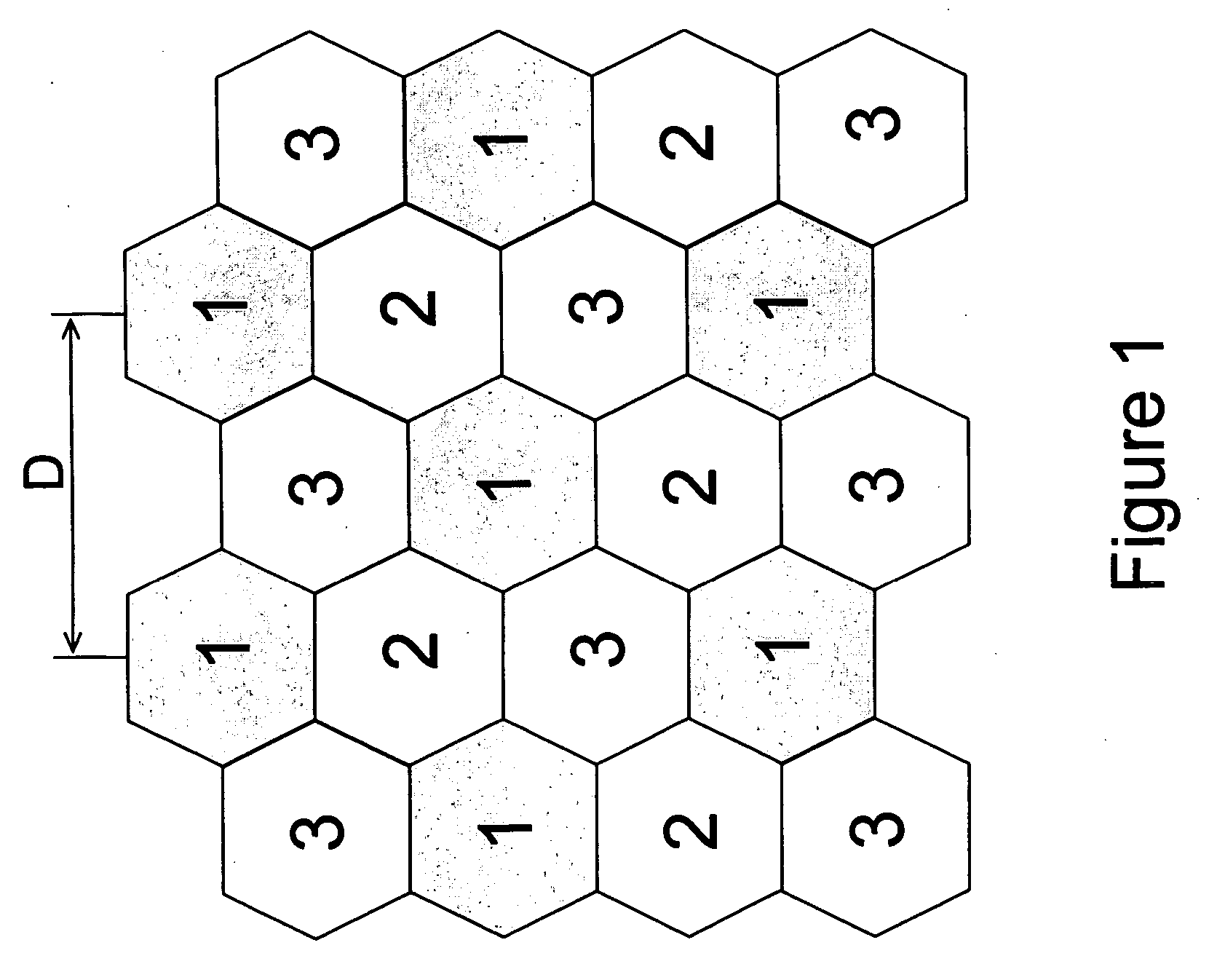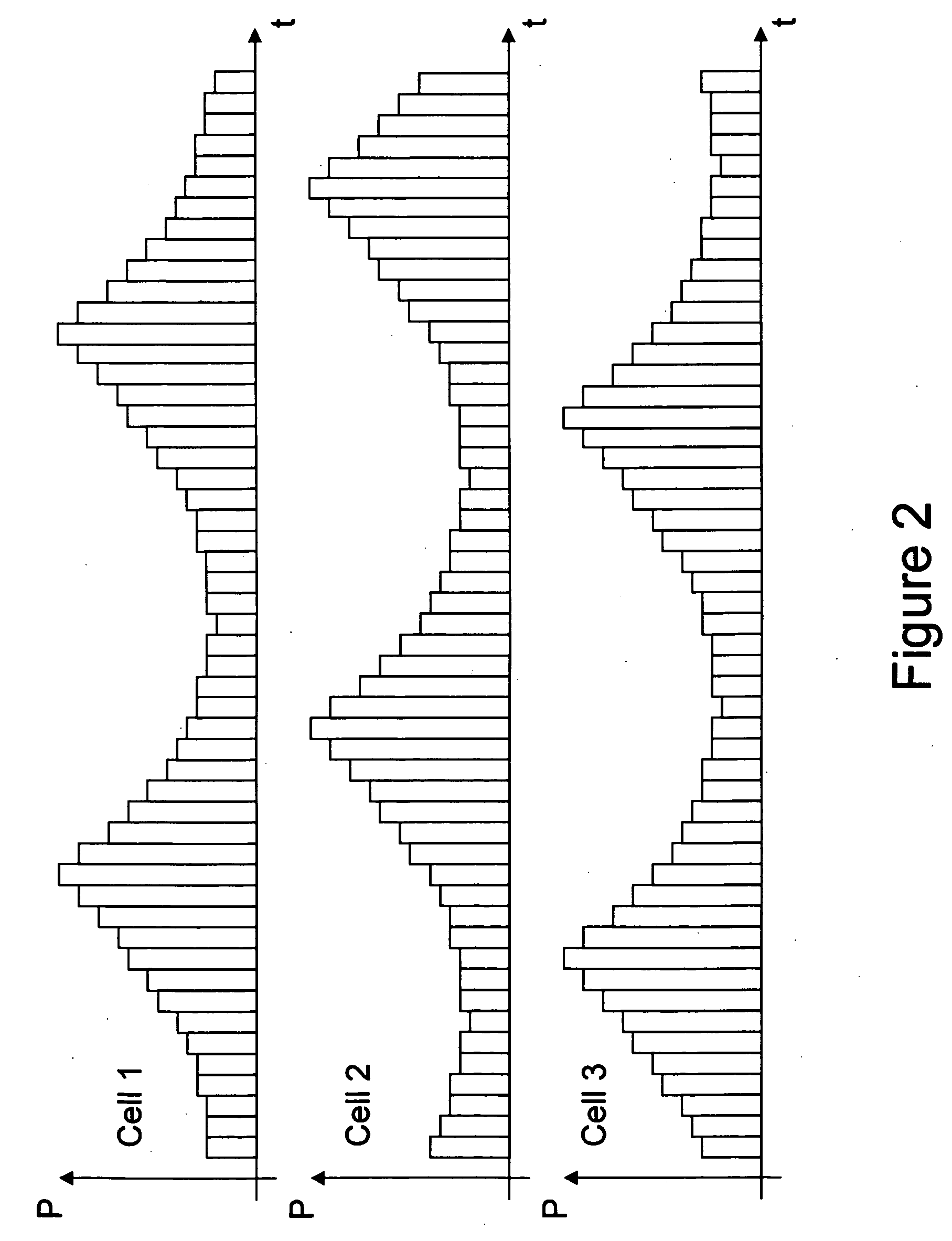Transmitting of cell management information in a cellular communication network
a cell management and network technology, applied in the field of cell management information transmission in a cellular communication network, can solve the problems of fewer users being serviced, affecting the service life of users, so as to facilitate full coverage and neighbor measurements in a non-cdma system, and improve the user experience. the effect of frequency reuse factor
- Summary
- Abstract
- Description
- Claims
- Application Information
AI Technical Summary
Benefits of technology
Problems solved by technology
Method used
Image
Examples
Embodiment Construction
[0066] The present invention is intended for a cellular system where frequency reuse possibilities are limited. Primary target applications are to facilitate full coverage and neighbor measurements in a non-CDMA system and to extend the underlying basic principle to a TDD system. However, the present invention is not restricted thereto, but other types of systems such as CDMA systems and FDD systems can also be enhanced by applying the present invention.
[0067] It is assumed throughout the invention that there is a time synchronization between cells, i.e. that the base stations of the mobile communication network are operated in a time-synchronized manner. To achieve high capacity in a continuous-coverage TDD system, synchronization is believed to be necessary. Also in an FDD environment time synchronization is advantageous, since especially handover performance can be improved by cell synchronization.
[0068] According to FIG. 3, a time-slotted transmission power scheme according to...
PUM
 Login to View More
Login to View More Abstract
Description
Claims
Application Information
 Login to View More
Login to View More - R&D
- Intellectual Property
- Life Sciences
- Materials
- Tech Scout
- Unparalleled Data Quality
- Higher Quality Content
- 60% Fewer Hallucinations
Browse by: Latest US Patents, China's latest patents, Technical Efficacy Thesaurus, Application Domain, Technology Topic, Popular Technical Reports.
© 2025 PatSnap. All rights reserved.Legal|Privacy policy|Modern Slavery Act Transparency Statement|Sitemap|About US| Contact US: help@patsnap.com



